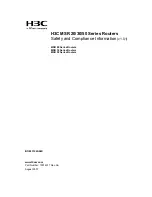
Platinum™ IP3
Installation and Operation Manual
PX-HSRMX-OBG Frame Sync and Mux Output Module
© 2016 Imagine Communications Corp.
Proprietary and Confidential.
September 2016 | Page 185
DeEmbed Control
The following are options for the
DeEmbed Control
parameter.
Item
Description
Repeat
Upon detection of a de-embedding error, the de-embedder repeats
the last good AES sample.
Mute
Upon detection of a de-embedding error, the de-embedder mutes the
current outgoing AES sample.
Dolby E Detection
SDI streams originating from 3rd party equipment may not always have the PCM/Non-PCM Channel
Status Bits set correctly when transporting Dolby-E. The PCM/non-PCM Channel Status bit (short ‘Cbit’)
is intended to indicate that the embedded AES3 data stream is of non-PCM nature (see also SMPTE
337M).
Dolby E Detection, based on the presence of a Dolby E Header, is an alternative method and should be
used in cases where the Cbit is incorrectly set. It is important for the downstream Audio processing to
know what type of Audio (linear PCM or non-PCM) it is dealing with in order to not to destroy Dolby E
data, for instance, by the sample-rate-conversion process, linear PCM data would normally undergo.
Based on the detected Dolby E Header, an incorrectly set Cbit can be corrected for non-PCM Audio data
(Dolby E) that exits the board via TDM. If the correction is not enabled, a TDM Receiver without Dolby E
Header detection/correction will not be able to identify the audio stream as non-PCM, hence Dolby E
data might get destroyed on its path through the Output processing module.
Audio Embedding Modes
Each video channel has an audio embedder component composed of several smaller subcomponent
blocks:
One ancillary data stripper (ADS)
Four audio embedding subcomponents
The first subcomponent is an ancillary data stripper (ADS). This block removes all ancillary data packets
in the input SDI stream, prior to embedding. Following the ADS block are four separate audio-
embedding subcomponents. Each subcomponent has the ability to operate on only one audio group,
either appending or overwriting a predetermined group onto the SDI stream.
The audio embedding modes are
Audio Group (1–4) Embedding Mode
parameters.
















































